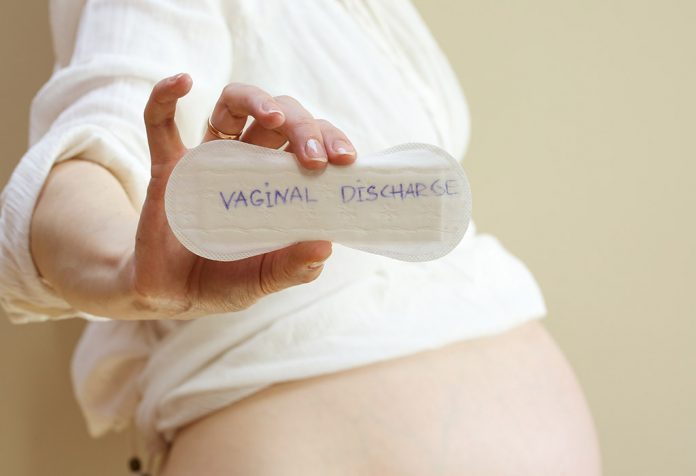Vaginal discharge is fluid that comes out from the vagina. Most women have discharge at some point during life. The discharge is usually white or clear. Some women have discharge every day, but other women experience it only occasionally.
In this article:
Causes of White Watery Discharge
Can it be an Early Sign of Pregnancy?
How to Manage?
Is Douching an Option?
Treatment for White Watery Discharge
When to See a Doctor
A Guide for White Watery Discharge
The amount and type of discharge that is experienced can change throughout the monthly menstrual cycle. It can also change throughout life, including during puberty, pregnancy, and menopause.
Watery discharge is typical of normal, healthy vaginas. Most women have about 1 to 4 milliliters (around ½ teaspoon) of discharge every day during the reproductive years. There may be more discharge when the estrogen levels increase because ovulating, pregnant, or using birth control pills.
Normal discharge looks like water, egg whites, or milk and has a mild odor. If there are any significant changes in the consistency of the discharge, it could be a sign of an infection.
Causes of White Watery Discharge
Vaginal discharge helps keep the vagina clean and free from infection. Healthy bacteria living in the vagina help make the secretions acidic. This acidic discharge fights off bad bacteria and clears out dead cells.
Vaginal discharge can begin about six months to one year before a girl gets the period. It’s caused by hormonal changes. If the discharge is watery, it’s most likely normal and not a sign of infection or concern.
Clear and watery discharge can increase at any point during the cycle. Estrogen can stimulate the production of more fluids.
Can it be an Early Sign of Pregnancy?
Clear watery discharge increases during pregnancy, but it’s not necessarily an indication that it is pregnancy. If there is doubt about pregnancy, talk to the doctor, or take a pregnancy test to be sure.
There may be more discharge during ovulation. This discharge tends to be clear and stretchy, such as egg whites. It may be less watery than discharge during other parts of the menstrual cycle.
Many women experience an increase in discharge during pregnancy. Watery discharge is usually harmless, but other types of discharge can be a sign of infection or concern. Call the doctor if there are symptoms like –
- Pain or itchiness in the vulva or vagina
- A green or yellow discharge
- A foul-smelling discharge
- White, cottage cheese discharge
Changes to discharge may be a sign of a sexually transmitted infection (STI) like chlamydia or gonorrhea or other types of infection. Bacterial and viral vaginal infections can cause pregnancy complications, so it’s important to see a doctor as soon as there are any symptoms.
If there is a rush of water, it’s probable that the water broke and seek immediate medical care. If at the end of the pregnancy, this is a normal sign of labor starting. If they aren’t yet due, this can indicate premature labor and delivery.
How to Manage?
Watery discharge is normal and healthy. There’s nothing can be done to prevent it but there are ways of dealing with it.
The amount of discharge that accumulates in the underwear can fluctuate during the month. Excessive moisture in the underwear can be both uncomfortable and unhealthy. Bacteria and fungi thrive in moist environments, so it’s important to keep the area dry and clean.
Panty liners and pads are the best way to manage excessive moisture. Changing them throughout the day should keep it dry and comfortable. Avoid products with deodorants because they can cause irritation. Look for products labeled unscented. Also, try ‘period underwear’ which is designed to absorb moisture.
Is Douching an Option?
Vaginas require no cleaning. Watery discharge is a side effect of the built-in cleaning system. Vulvas require very little cleaning. Regular showers with soap and water are all needed to keep the area healthy and clean.
Douching isn’t recommended because it can lead to infections. There is need of healthy ‘good’ bacteria in the vagina to fight off infections. During douching, these good bacteria get washed away and the vaginal walls become susceptible to infection.
Treatment for White Watery Discharge
The treatment for the issue depends greatly on the underlying condition and cause. The problem of watery white discharge can be easily treated at home by making a few changes in the lifestyle.
Consult the doctor and tell the associated symptoms. Vaginal swabs might be taken for assessment and provide with treatments based on the cause such as antibiotics for infections.
When to See a Doctor
Vaginal discharge is one of the most common reasons women see a doctor amounting to about 10 million office visits per year. Clear, watery discharge is rarely a sign of a problem.
There are several conditions including infections and STIs that can cause abnormal discharge. Discharge may be a sign of a problem if there are noticeable changes in colour, odor, consistency or amount.
If there are any concerns about the vaginal discharge, make an appointment with the doctor. Also, seek treatment at a sexual health clinic.
See the doctor if there are any signs of abnormal discharge –
- Yellow, grey or green colour
- White and chunky discharge like cottage cheese
- A strong, fishy or sour odor
Conclusion
Watery discharge can be uncomfortable but it’s usually harmless. Try home management otherwise contact the doctor.
References
- https://www.healthline.com/health/womens-health/watery-discharge#management
- https://www.medicalnewstoday.com/articles/321625#seeing-a-doctor
